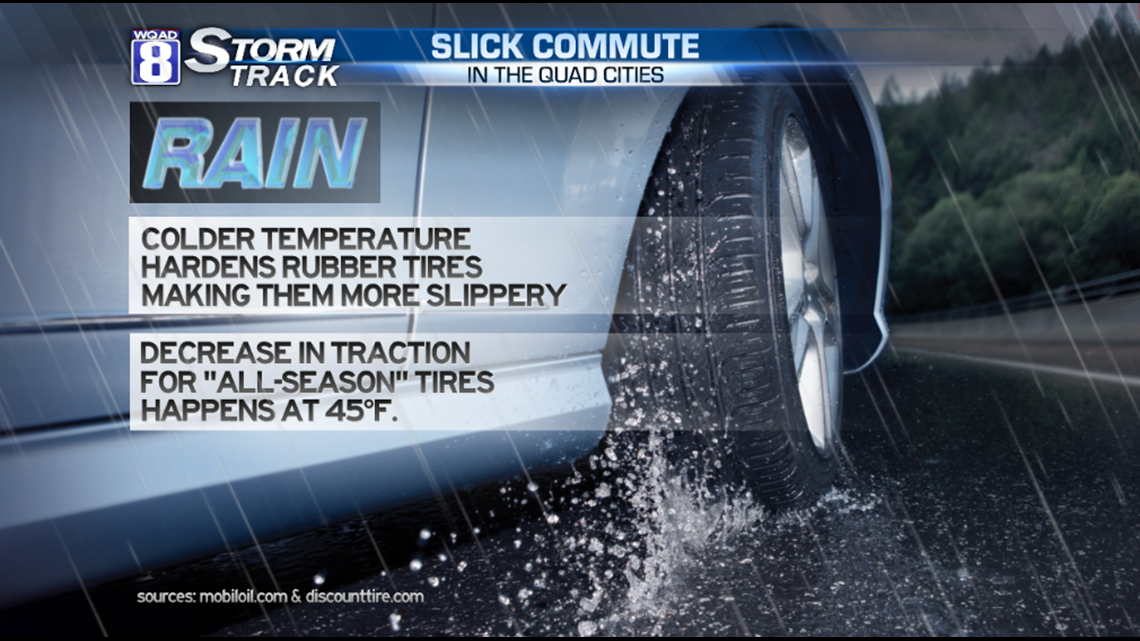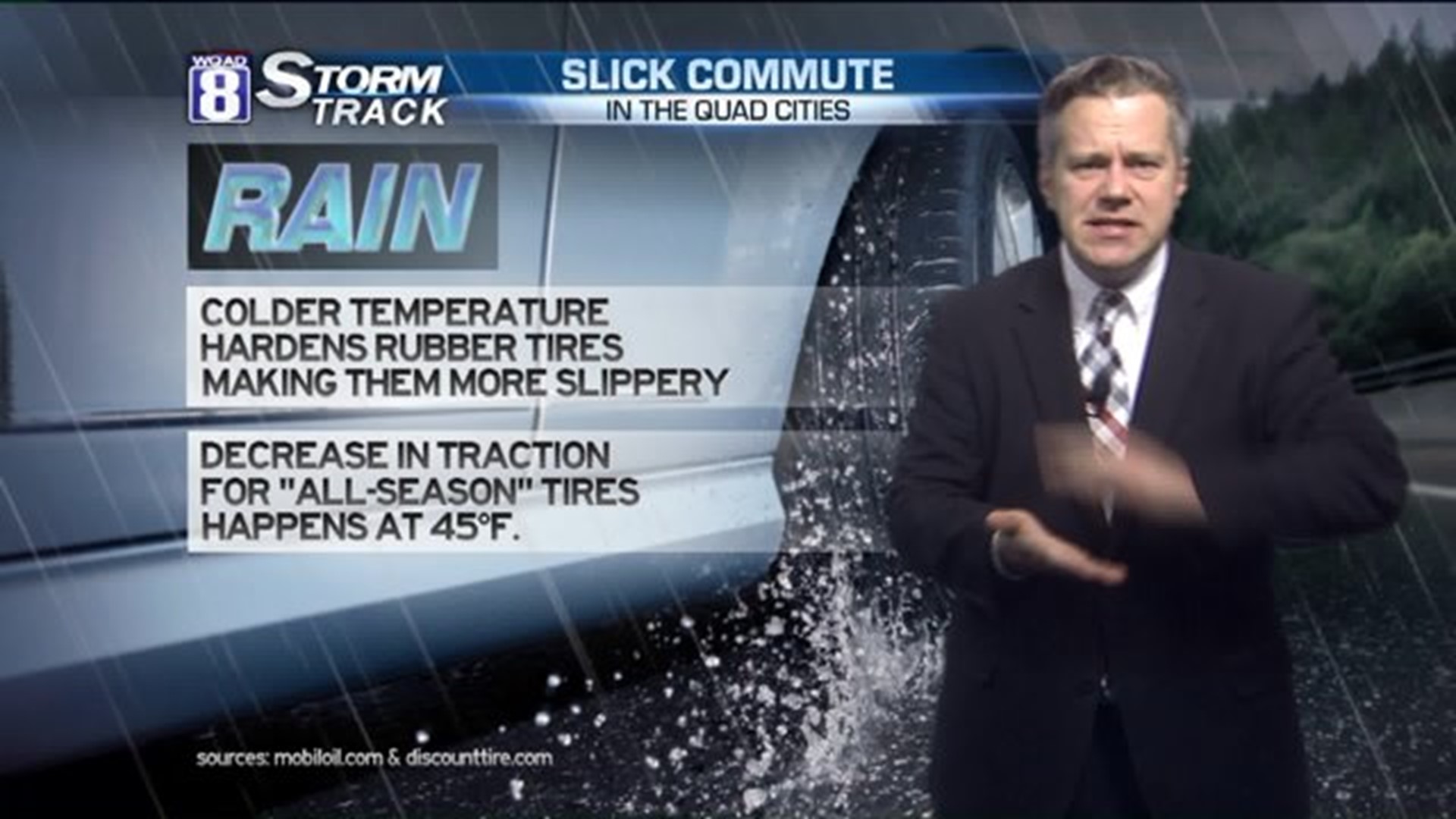If you're headed out and about this morning, a word of caution: watch your speed! Not only do we have some pretty decent rainfall out there, the temperatures are quite chilly. Colder temperatures have a significant impact on your ability to steer, accelerate, and stop. This morning, temperatures are in the 40s which will make things slicker for the morning commute. But having rain with temperatures in the 40s is very different than rainy conditions with temperatures in the 50s.
First, some science about tires. While "winter tires" are designed to deliver safety and control in snow, ice, and cold weather conditions, the same is not true for "all-season tires." In fact, the term may be a little misleading. According to Discount Tire, all-season tires do not deliver the same performance as winter tires. "The superior traction that winter tires deliver, as much as 25 to 50 percent increase over all-season tires, can very well be the margin you need to stop in time or turn to avoid trouble."


All-season tires use special compounds to deliver better wear and good traction in a wide variety of conditions. But the trade-off is a decrease in traction in conditions below 45 degrees Fahrenheit. This is the temperature where tires begin to harden and lose traction. So when your car thermometer says the outside temperature is cooler, yet still above freezing, you may notice more slippage.


Here's a look at the cold rain that is falling this morning. Not many of us are driving with fresh winter tires (since we're heading out of winter), so drive safely...especially if your tires are nearing the end of their lifespan.
-Meteorologist Eric Sorensen

